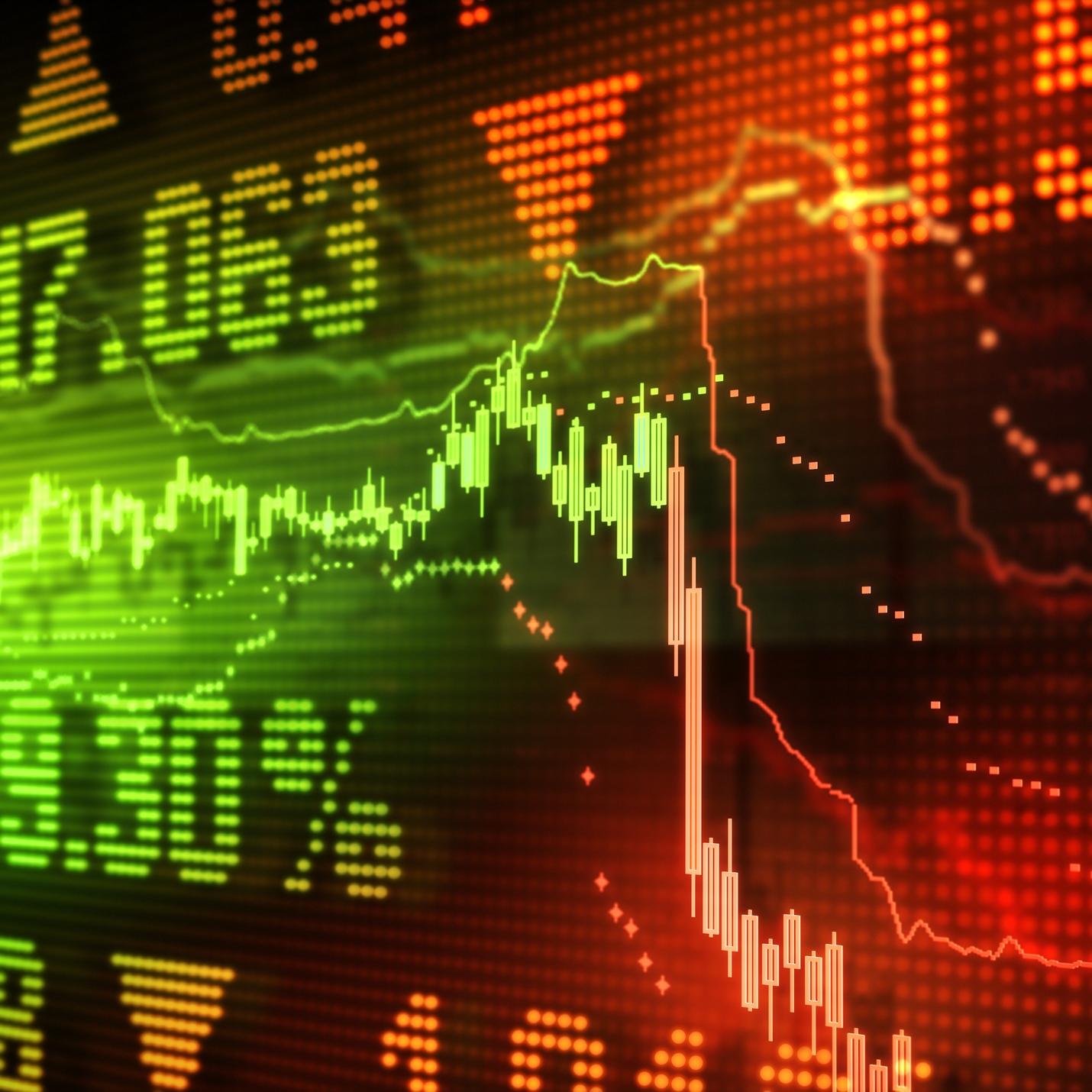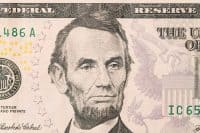 Quantitative Easing, or QE, is a term that many investors were forced to understand. Then came QE2 as an even more difficult pill to swallow. After the FOMC or any central bank has taken rates to zero, there is really nothing left to do other than implementing different unorthodox easing measures outside of lowering interest rates. QE2’s formal end occurs this week as June comes to an end. Finally! The great worry is that now the gloves will be off and the biggest buyer in the bond market will be gone. In short, now rates can finally rise as they would have without the government buying the extra billions and billions of dollars in Treasury notes each month.
Quantitative Easing, or QE, is a term that many investors were forced to understand. Then came QE2 as an even more difficult pill to swallow. After the FOMC or any central bank has taken rates to zero, there is really nothing left to do other than implementing different unorthodox easing measures outside of lowering interest rates. QE2’s formal end occurs this week as June comes to an end. Finally! The great worry is that now the gloves will be off and the biggest buyer in the bond market will be gone. In short, now rates can finally rise as they would have without the government buying the extra billions and billions of dollars in Treasury notes each month.
But…. The worries may be wrong. The end of QE2 may already be reflected in the stock market and bond market.
It is hard to imagine that the markets can adequately price in any major event of this magnitude after what we have witnessed over recent years. This time may be different. If you think about it, it is not too unreasonable to think that the entire end of QE2 is already priced in. 24/7 Wall St. has come up with ten less-considered issues that point to the end of QE2 already being priced into the markets.
1. Bond Buying Competition
Many bond buyers have looked elsewhere for returns. If the government is buying up Treasuries and driving down yields then the idea is that there is a larger buyer than any other market participant. Now that Uncle Sam is going to be only reinvesting maturing assets, the ‘normal bond buyers’ (and sellers) will have a true bond market that moves without the impact of billions of dollars being purchased in Treasuries each day by the government.
Bonds also have commodities and stocks as competition. While stocks have started to recover from a large selling wave since the end of April, there was a drop in stock prices for six consecutive weeks. Commodity prices have also backed off of their highs. Gold has come off almost $100 an ounce from the highs. The Dow Jones Industrial Average fell almost 1,000 points in the last two months before the fresh recovery attempt. In the last three-months, the 10-Year Treasury yield fell from 3.50% to under 2.90% before the latest move back up to 3.04%. The world markets cannot only be full of investors who run for the hills via the safety of Treasuries.
In short, if the bond market was going to unravel in one massive swing then the yield on the 10-Year Treasury would have risen in anticipation of this event. Most investors fail to consider that the government’s peak Treasury buying was actually months ago. The government’s Treasury buying has been far less buying competition as a result.
2. Banks & Higher Reserves
Banks will be buying more Treasury notes in the months and years ahead. The new regulations that are coming for the “too big to fail” banks all point to higher capital requirements even than what had been imposed after the TARP saved these banks. That translates to less lending and putting cash in risk-free assets as reserve capital. That means more bond buying by the major banks. Those deadlines may not come until 2012 or 2013, but this matters as it means billions and billions of dollars each month will keep rolling into short-term and intermediate-term Treasury bills and notes. BofA, J.P. Morgan Chase, Wells Fargo, Citi, and others all just lost their ability to invest in riskier assets and to make riskier loans.
The Basel Committee on Banking Supervision has even noted that this could effectively double or triple the core reserve requirements. The aim is to protect the banks from ever becoming insolvent. Less lending will result, which means less risk-capital in the system and possibly a slower economy as a result. That will keep bond yields relatively low.
3. Greece, and other rotten PIIGS
Greece may be on the verge of another round austerity measures, but go find one market participant who believes that this will truly be the end of Greece’s woes. Greece has a history longer than can be counted easily of not being fiscally responsible. An agreement to be responsible today does not mean that the politicians of tomorrow will comply.
Greece is just one of the PIIGS. Ireland, Portugal and Spain are all close to facing the debt firing squad as well. The ratings agencies have all been very negative on these nations and they are all far from being out of the woods. The Swiss market is not large enough to be the true safe-haven, so investors have been and will continue to be forced into buying short-term and intermediate-term Treasuries as their money has to find a safe haven. This could be going on for months or it could go on for years.
4. China & India
China and India have both been slowing their economies. China was fighting an overheating and inflation scenario, while India has been doing its best to fight off the inflation beast. If they are not going to foster global growth, does that translate to a runaway yield curve?
China may desire to invest its endless billions of dollars elsewhere, but in the end it almost has no choice but to be a bond buyer. After Uncle Sam is out of the business of making an artificial market the Chinese may return as Treasury buyers. China would prefer to buy real assets, but they have so much capital available that the commodity markets and other bond markets just do not compare in size to our own bond market in the United States. By default, there may just be no other place to go put money to work.
5. Commodity Prices & Inflation
Ben Bernanke is currently looking as though the “transitory” rise of commodity prices and inflation may have been correct. Oil has fallen $15 a barrel, gold has fallen almost $100 an ounce, and that runaway silver market has all but gone quiet. Food prices are now substantially off of their wholesale highs that had been seen in wheat, corn, and other commodities. Now that the CFTC has figured out that raising margin requirements can keep the speculators more at bay, that has taken the breath out of commodities. Inflation is generally driven by higher input costs. If oil, gold, and base metals are going to remain less high than before, then the key driver of inflation is becoming less of a threat.
6. PIMCO & Bill Gross
The bond king missed a major rally in Treasury prices. Earlier this year came word that PIMCO was not going to buy Treasury debt any longer. Bill Gross said more attractive bond markets were out there at the time. The reality is that this means Bill Gross and his team missed a major rally here in the Treasury market. They likely made some of that up elsewhere, but there has been very little praise of late for the bond king for “calling the market” correctly. The most recent outlook issued by PIMCO as “Higher Commodity Prices and the End of Economic Growth Without Inflation” does not exactly lend itself to runaway bond yields in the near-term.
PIMCO obviously thought that rates were going to rise sharply. Instead, they got caught up in the panic. Does this mean that they will not ultimately be correct? No. Actually, “No, but…” The reports that PIMCO was short selling Treasuries has been refuted. It turns out that if PIMCO is not a bond buyer, then it is taken as though they are shorting bonds. The real move is they were just Neutral on bonds. Just like China, PIMCO will find in the months ahead that the international bond markets just might not be large enough to place all of their assets. The PIMCO Total Return (PTTRX) fund has some $243 billion in assets on last look and that is only a small portion of the firm’s $1 trillion or more under management.
7. Ratings Agencies
The credit ratings agencies have now warned that if the politicians cannot reach an agreement on the debt ceiling and on the deficit that a credit rating event could occur sooner rather than later. Many investors feel that the true “AAA” rating is already a manipulated rating. The United States is many cases is no better than the troubled spots in Europe when it comes to living within its means. What is interesting is that the ratings agencies have not really brought up the end of QE2 as being a credit event.
If you think about the true risks that are out there and if you think about the government having already peaked in its Treasury note buying months ago, the credit ratings agencies have many other issues to worry about. A credit rating “event” may just be even more of a formal warning rather than a formal downgrade. That may still be the end result but it will not be because of QE2’s end.
8. U.S. Demographics & Austerity
The generation with the nation’s wealth is getting older and older. The working class of today is not believed to have the same opportunity ahead as the working class of yesteryear. As the population grows older and as it pulls money from stocks and rolls more and more into the safety assets of bonds, will that drive rates higher? Unlikely. The most recent recession, The Great Recession as it is called now, wiped out an entire generation of stock market investors. After 2009, many young investors said that they have little interest in stocks. Whether that holds up or not is an unknown as is the case with many trends, but excess savings and retirement funds cannot just sit under the mattress. This could be just one more secular trend that supports the Treasury market.
Austerity measures are only going to get worse from here. National governments are going to be forced to live more and more within their means. Ditto for states and municipalities. There is not going to be an endless amount of capital in the world to keep lending governments. What happens when governments spend less? It drives down economic growth as there is less capital sloshing around in the economy. It means fewer jobs. Historically that either drives interest rates lower or keeps those rates low.
9. Employment Situation
The great recovery in jobs has yet to be seen. The inflation rate peaked at nearly 10% on the unofficial rate, but after getting under 9% the unemployment rate has actually risen again and is back to 9.1%. The weekly jobless claims had fallen to a more reasonable level under the 400,000 mark. No longer. Now those claims have been weeks and weeks of being well above the 400,000 weekly mark. What happens in periods of higher unemployment? Stagnant economies, at best.
If the other items mentioned do not suddenly reverse, then a weak jobs market is going to keep a lid on interest rates. Because of this, and because of slower economic readings in GDP and more current data, Fed Fund Futures do not show a rate hike expected before April of 2012. That is nearly another year before Fed Funds would even be at or above 0.25%. Does that sound like QE2’s formal end is going to send rates through the roof?
10. Debt Ceiling
The politicians in America at some point have to rectify this arguing over spending and taxes. Keeping the debt ceiling flat is actually fiscally responsible, but it is going to act as a major drag on the economy. What happens if the United States keeps servicing its debt but starts sending out lower social security checks, stops paying for Medicare, and stops paying for its public works projects even on a “temporary basis” until the new fiscal year? That is not exactly an economic growth scenario. That will translate to rates remaining low.
It is likely that some workaround will come. The republicans want spending cuts and no tax hikes. The democrats seem to favor tax hikes and less spending cuts. Regardless of who wins out in the end, the United States cannot keep borrowing and spending beyond its means. This debt ceiling may be raised in the weeks ahead but it will not be an open-ended blank check. Elections are coming and Americans will have two key platforms ahead: jobs and government deficits breaking the bank of the current generations rather than just breaking the bank of future generations.
The caveats or exceptions…
The markets have known for months and months that QE2 was coming to an end. You may have noticed that we never even brought up the fact that corporate earnings growth is slowing nor that housing was still in decline, mainly because you already knew about those issues. Uncle Sam’s peak Treasury buying was not back-end loaded as one last thrust before the end. Some are even now worried that another recession is coming soon. In short, the markets have had months and months to price in the end of QE2 and the notion of a QE3 effort never really got off the ground. Not yet at any rate.
Our one concern is that the markets have been very poor at pricing in major events. The ‘efficient market theory’ seems to have been broken for years. George Soros has been quoted as saying “Contrary to the tenets of market fundamentalism, financial markets do not tend toward equilibrium; they are crisis prone.” It seems that as the markets get closer to an event that there is almost always an extra move higher or lower because of some reason or another.
Is it likely that starting in July that investors will wake up with surprise and ask “Hey, where is Ben Bernanke?” Unlikely. The Federal Reserve has been lowering its economic recovery outlook rather than increasing it. We have known for months now that QE2 was coming to an end. Maybe the market has actually started to price in the end of QE2.
JON C. OGG
Thank you for reading! Have some feedback for us?
Contact the 24/7 Wall St. editorial team.





